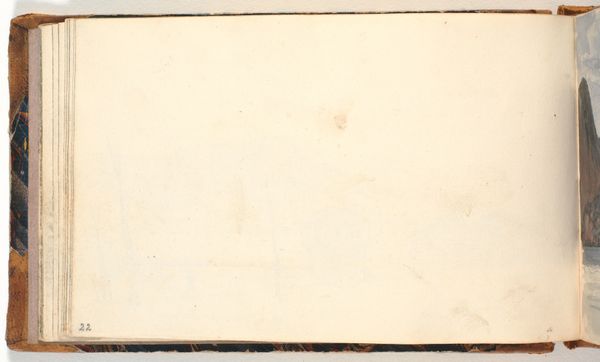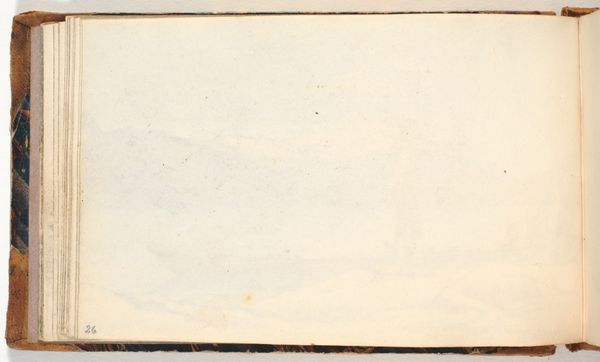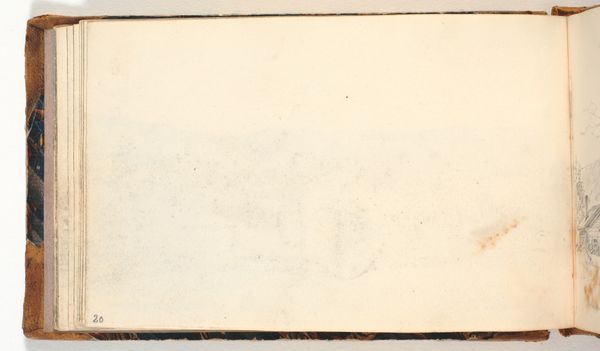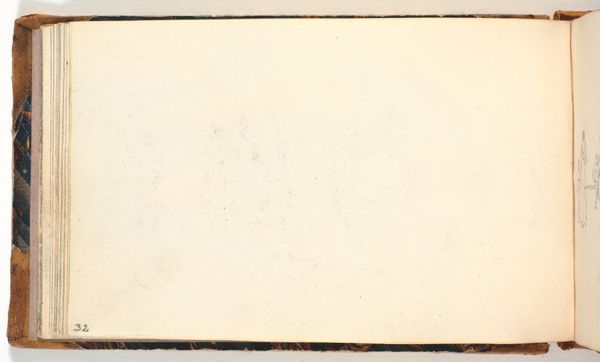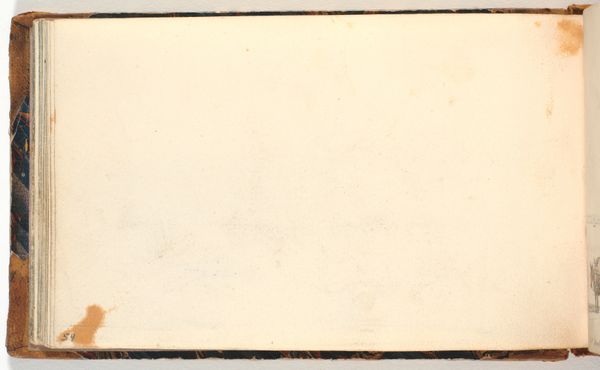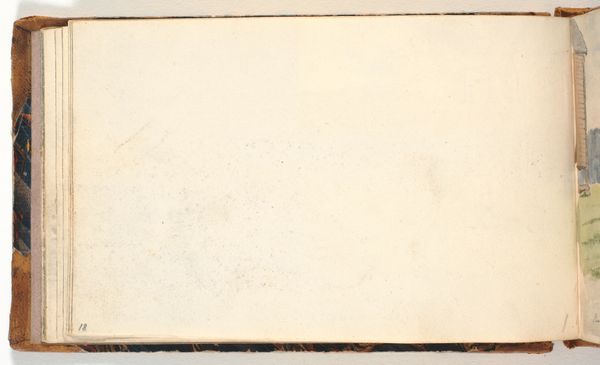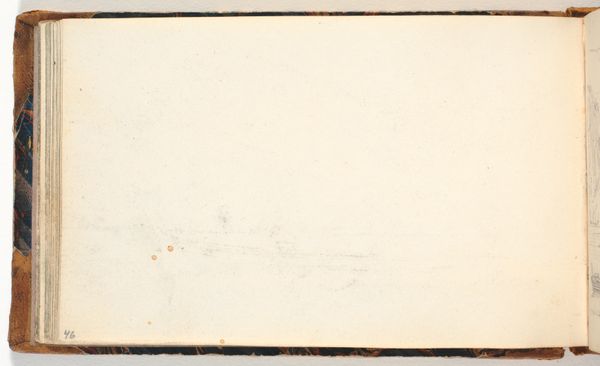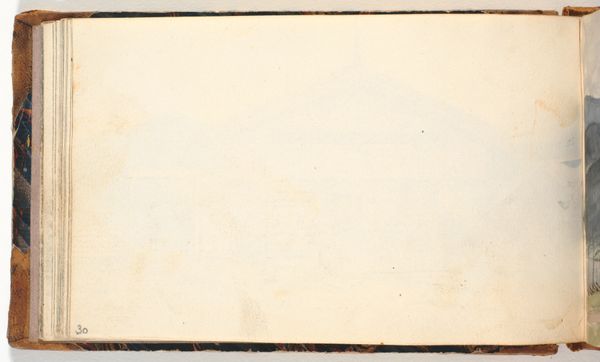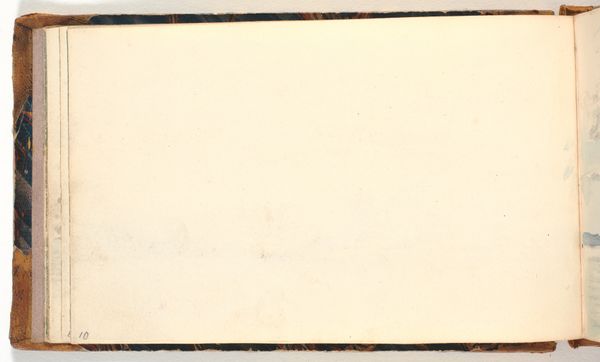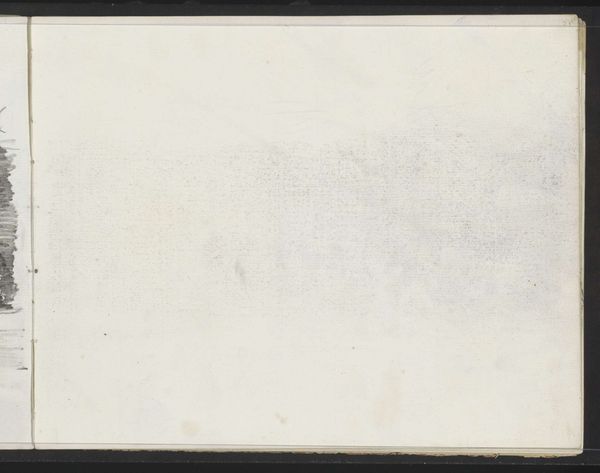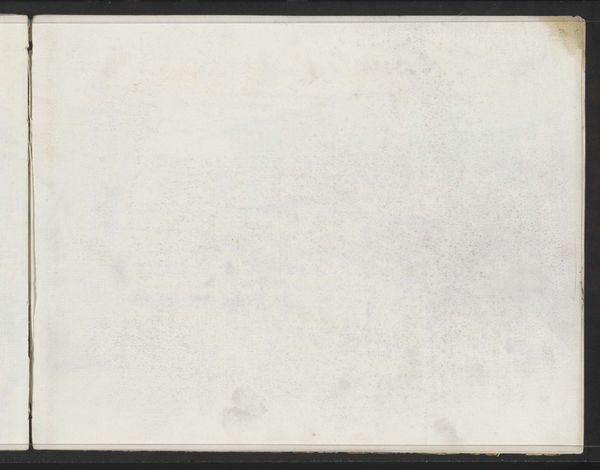
Dimensions: 107 mm (height) x 179 mm (width) (bladmaal)
Editor: Here we have "Blank" by Martinus Rørbye, created in 1832, rendered with watercolours on paper. What immediately grabs me is its deliberate emptiness, a kind of anti-landscape. How do you interpret this void? Curator: Intriguing, isn't it? Let's not immediately assume void, but rather, potentiality. Observe the creamy texture of the paper, its slight undulations, the way light interacts with its surface. What compositional elements can we isolate and examine, before prematurely resorting to external contexts or narratives? Editor: I notice a faint almost sketch in the top right corner of some kind of architectural element... Maybe a building of some sort? And I think I can see the texture of the pages along the spine, their layered composition and wear is quite nice to look at. Is this what you mean? To see the piece as a compilation of many surfaces and planes instead of, like I thought originally, nothing? Curator: Precisely! That sliver suggests not absence, but the very condition of possibility for representation. The slightly mottled surface invites the eye to wander, to seek form within formlessness. Think of it as a pre-image, an abstract prelude before representation takes hold. How does the medium of watercolour itself contribute to this effect, do you think? Editor: It creates a sense of depth and layering despite the 'emptiness'. So instead of searching for 'what' is depicted, you focus on 'how' it is depicted... Very interesting way to look at it. I’ll keep that in mind from now on. Curator: Indeed. Art often lies not in the depiction, but in the aesthetic experience of pure form. It challenges us to move beyond facile narratives.
Comments
No comments
Be the first to comment and join the conversation on the ultimate creative platform.
